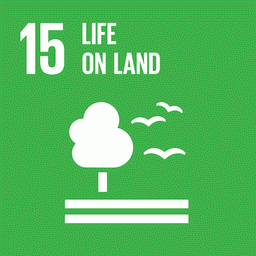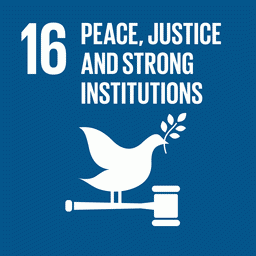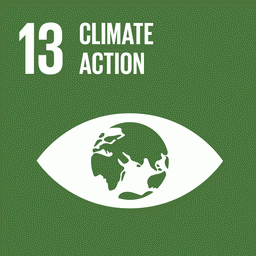If, on the one hand, the Amazon is featured in newspapers around the world, on the other hand, there is still a lot of room to improve communication on the socio-environmental agenda—and young people play a key role in this change. That is what the journalist Paulina Chamorro said in an interview to the team of Amazoniar, an initiative of IPAM (Amazon Environmental Research Institute) to promote a global dialogue on Amazon.
Working in socio-environmental journalism for 25 years, Chamorro began her radio career dealing with environment-related issues. She was awarded twice with the Chico Mendes Socio-Environmental Prize for the best radio program, and with the João Pedro Cardoso medal, the only Brazilian environmental award, for her role in culture and environment communication.
A regular contributor to National Geographic, Paulina has been presenting the Voices of the Planet podcast since 2016 and is one of the creators of the Women’s League for the Oceans, a women’s movement for the preservation of the oceans. Her greatest passion is participating on great expeditions in the wild and telling the stories of local peoples, their struggles, customs, and particularities, based on her direct contact with each culture and region
The journalist spoke with the Amazoniar team about her experiences writing about the forest, the communication challenges in a scenario where misinformation is constantly increasing and why young leaders are key to take the message of indigenous peoples beyond their territories.
Check out the interview:
What are you most proud of having done in/for the Amazon?
I had the opportunity to be in different places of the Amazon, with different approaches. For “Mar sem fim” [show broadcast by TV Cultura], we sailed to show what the sea looks like for those looking at the coast. We sailed for six months in the Amazon River. I was there to write a story about deforestation, but I talked mostly about conservation and the new economy. I cannot speak about pride, but I can talk about a journalist’s mission, focusing on socio-environmental issues, translating and bringing the Amazon closer to the people. One of the last interviews given by Zé Cláudio [José Cláudio Ribeiro da Silva, head of Praialta Piranheira’s agro-extractive settlement project] before he was killed, was a report that translates very well what it means to approach Amazon from different fronts. He told me he was being threatened. He had already filed 33 police reports, and talking to the press was his Hail Mary. A few months later, a colleague that mediated this interview called me to say that Zé Cláudio was killed. Then they [José Cláudio and his wife, Maria do Espírito Santo] were named guardians and heroes of the forest by the UN, but that is a posthumous tribute. That may be one of the most important subjects. But it is frustrating to know that even this cannot decrease violence in the countryside; actually, the violence against those who defend the forest is only growing.
What does the Amazon mean to you?
When I think of the Amazon, I think of its people and the experience of listening to their stories. I also think about its splendor we cannot put into words. Amazing things happen there and there are amazing places we do not know. I would like to tell those stories to take away from people’s minds the idea that the Amazon is just an environment. I like to say that the Amazon has the largest extension of mangroves in the world and that we can also access the sea from there. It shares borders with the sea and environments that are absolutely wonderful, connected and important. We have the indentations of Maranhão, which borders the Amazon when it becomes the Atlantic Forest. Those recesses are a series of rivers and isolated islands, some with dunes and others with mangroves. Each of them has a particular culture. The Island of Lençóis is a Sebastianist island. They believe that Dom Sebastião, an old Portuguese king, will return and pick us up from the mud. We have a very rich culture. The Marajó Island is an Amazon region that we know nothing about. The city of Afuá, located on the island, has no streets – it is all built on stilts, so you can only ride bicycles. It is cheaper if you have your own [bike]. They put loudspeakers on them and cycle through this city entirely on stilts. It is impressive. Our food culture has strong Amazon origins. I like to talk about the importance of indigenous peoples and how they helped us have a lot of what we eat today. They have very ancient methods. Connecting Amazon with food or with our ancestors is also important. I write a lot about preservation. I try to make the interviewees give the best of themselves – their ideas, their struggle, and the best of their knowledge. It is very important to have a space like this for people who are in the fight, because we already are covering how people are destroying the Amazon. Additionally, we need spaces to get to know and get closer to those who do a lot for the forest.
What should be Brazil’s priorities to achieve the climate goals? How can the Brazilian population and the international community contribute?
I think we can start by helping the people of the forest. I am talking especially about the indigenous territories because the monitoring maps clearly show that is where the biodiversity is still protected. If we, Brazilian society, cannot understand that the indigenous territories must be protected and that they are not the only ones who have to protect the biome, but all of us, because that is a matter of survival for Amazon and for the planet, we are screwed.
At the moment, we have to deal with the violence and the invasion of indigenous territories. In the Yanomami territory alone, there are over 20,000 invaders. If this is not a war, what is it? And that is just one of the cases we are analyzing. At the same time, we are not getting results in another war: in the Congress. Public authorities are delegitimizing these territories’ importance and our rights. The Brazilian people’s rights were taken away by the Congress. We need a direct act of influence there because there is an evident gap between what society wants and the interests that are looked after in the Congress. This mining bill [Bill 191/2020, which regulates mining on indigenous lands] is a clear proof of that. As the Land Act (Ato pela Terra) was happening, the bill was approved by the Chamber of Deputies. So, we need to find other methods that are more effective and expeditious. We are about to have new elections, and a lot can still happen until then.
What do you think about the role of young people in the decision-making process regarding the Amazon?
I took time to listen to young activists and I have learned a lot, especially about resilience. At the same time, they have managed to create a very important agenda. I have spoken much more with climate activists, territory activists, and young indigenous leaders who have taught me that we have an ancestral future. I think that is beautiful: looking to the future knowing how to value and protect what forms it. This ancestral future is possible as long as you carry the fight that has already begun. It brings hope for the existing articulation level. Little by little, they have managed to reach other departments besides the Congress. Our local participation in public policy is very important. That is a youth’s role that I see very positively. That is a very focused type of activism and we are getting results from it. It would be very nice if it inspired more young people, showing that it is possible to have a more active role, because they will be affected. There are few spaces like that in politics and in the press. They are still treated only as a niche.
How important is popular participation in protests such as Ato pela Terra?
I am Chilean. These are different realities. My country was recently transformed: it has the youngest president on the planet. This was done by the youth force, the force of having recognized people in the political space and grassroots mobilizations. The mobilizations started a few years ago and were led by young people, reaching their apex in 2018. It even resulted in a new Constitution for the country. I think the history of mobilizations has two fronts: one to generate changes, showing the strength of many people united and demanding something. But we also have inner strength, because when we participate in movements like this, we see that we are not alone. Sometimes, activism makes us feel alone and frustrated. So, these moments of joy, with music, for a cause, they strengthen each one of us to fight. I can see that everyone is emotionally drained by the pandemic and the government is constantly threatening Brazil’s nature. But I think Ato pela Terra strengthened the movement, especially the young people that never took part in a protest. I hope there are others to come, and that they are not just from the artistic class. It is important to have a very clear agenda. Ato pela Terra fought the herd that was passing through the Congress. So, mobilizations with specific agendas are very efficient, specially to give us hope back and strengthen us. It is crazy what is happening. So, we need to unite.
As a journalist working for over 20 years, you witnessed the emergence of the fake news wave and how it took the place of information in public debate. How can we reverse this scenario in the context of Amazon and what would be the youth part in it?
It has two aspects: the language and the distribution of content. I think we have failed in language. Those of us whose work involves communicating the importance of conservation have failed to simplify the message. This is quite clear in fake news: the language is clear and accessible. When news is released with true and accurate information, we have to be equally clear and accessible. And as for the means of distribution, for a long time—and I am speaking from my experience—for a long time we didn’t pay attention to WhatsApp and other more widespread means of communication. Nowadays, we have WhatsApp channels dedicated to distributing news of which we are unaware. What kind of news is being posted there? I see young people occupying these spaces and improving their language to distribute information about what is really happening and that is important to change our reality. For example, how important is the Amazon to put food on your plate on a daily basis? Relate to the country’s drought issue. How are we going to bring this information to the general public? Using the same weapons used by fake news: an accessible language and widespread means of communication—and I think the young people can play this role.
How important is it to have reliable sources to report on socio-environmental issues? What are the main challenges you face as a journalist to cover these topics?
The issue of sources is a consequence of fake news, because people distribute it without checking if the information is true. Fake news takes control of the people’s heads. It may be the craziest conspiracy theory, but if it crossed your mind and you hear someone reaffirming it, it is easy to think “it was that person who said it to me, and s/he is not crazy, then it must be true.” So the story goes on and no one bothers to check if it is true. I suffered a lot in the pandemic period because I needed to check the stories’ veracity on the field. With the pandemic, that was no longer possible. I have a list of experts who are not necessarily in the stories, but I carefully check the information with them to clarify things. Nowadays, with the speed of fake news, the greatest appeal of the communicators is this checking issue.
Several young communicators started digital initiatives to engage other young people in the climate issue. What is the role of young communicators in the socio-environmental agenda? What could be done to encourage the creation of similar projects, dedicated to fight against the destruction of the Amazon?
I have always worked independently. Now I am looking for partnerships. Recently, in the Women’s League for the Ocean, we wanted to talk about gender, climate and the ocean, so we invited Engajamundo to do it with us. Using the League’s distribution and communication power and Engajamundo’s language and vision, we made a series of podcasts. To me, the collective work was new—each one having his/her voice to write the story you want to tell. Young communicators have been doing this and it drew my attention. In these groups, there is space for everyone, with a lot of dialogue and commitment. Through language and distribution channels such as games and social networks, which are being used by young people to address the most diversified issues, we can talk about Amazon. In the Amazon territories, I am seeing increasingly more reporters of the forest and young indigenous leaders communicating. I think it only tends to grow.
What mechanisms do we have to bring the countryside and the forest closer to the urban environment, and vice versa?
I like to talk about emotion. I think communication still can take us there. As we have said before, everyone is very tired and worn out, and without hope we are not going anywhere. I think it is very important to make this connection, and it should be made through emotion. We can still show that food comes from the countryside, that water comes from the forest, that you can only eat açaí after the gym because it was well managed by the indigenous peoples a long time ago, that the tapioca you eat is indigenous food. We can make this association, which can be done through food and culture, to show that we are part of the forest. That is exactly what Ailton Krenak and Davi Kopenawa say: “We are the forest.” We are made of it too. The disconnection we are experiencing is so great that we are unable to look at the sky, at the rain—or notice the lack of it—and relate them to what is happening in the forest. We cannot reach the conclusion that this incredible food is the result of indigenous management. We cannot reach the conclusion that we have indigenous blood. I think we can close this gap by telling good stories and bringing emotion to people.
What would you like to say to the next rulers of Brazil?
I would like to remind you about Article 5 of the Brazilian Constitution. It says that everyone has the right to a balanced and preserved environment. We have to make it count. We also need to look after the Brazilian people, the Brazilian nature, and the Amazon, one of the most valuable things on this planet. The preservation of this environment will be in the hands of this new government. I want to understand the Amazon’s grandeur and the interdependence that not only the Brazilian people, but the planet, has with the largest tropical forest in the world.
About Amazoniar
Amazoniar is an initiative of IPAM (Amazon Environmental Research Institute) to promote a global dialogue about the Amazon and its importance for Brazil’s relationships with the world. In its fourth cycle, Amazoniar will promote a series of interviews with young Brazilians and foreigners who inspire the mobilization for climate justice, especially in the Amazon. In May and June, these interviews will be published every week, in full, on the IPAM website. Sign up for the newsletter to receive the next interviews!


